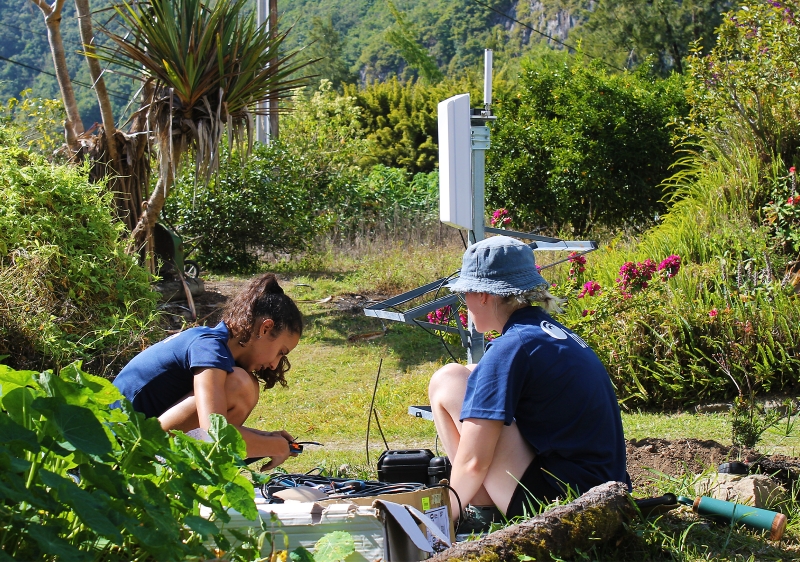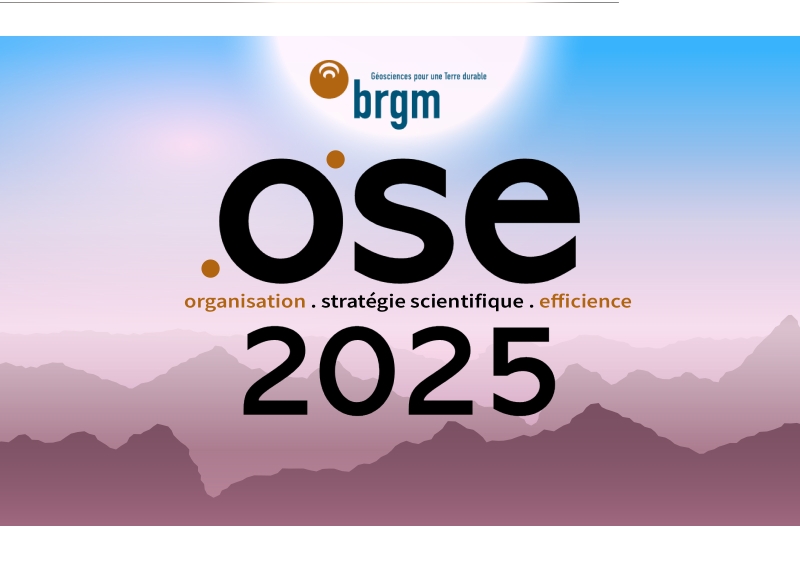Installation of GPS stations to monitor the Point du Jour landslide at Hell-Bourg in the heart of the Salazie caldera on Réunion Island. © BRGM - M. Legoedec
Internal structure
An organisation in the service of science
Organisation, scientific strategy, efficiency: throughout 2024, BRGM worked with its employees to prepare the so-called OSE plan, implemented as from January 2025. This re-organisation is part of a twofold process for the institution: reviewing its scientific aims (see this page) and fostering the growth of its activities. It aims to increase consistency, agility and performance to help the institution carry out its tasks and achieve its objectives. Above all, this means ensuring that our internal organisation is perfectly aligned with our scientific strategy. Six operational divisions have been set up to address the institution’s six challenges, each with its own scientific programme: Water, Risk Prevention, Mining Risk Prevention and Safety, Mineral Resources, Energy and Decarbonisation, and Subsurface Knowledge and Geomodelling, the basis for all the other activities. In addition, there is the Territorial Action Division, which involves BRGM’s regional offices in mainland France and the French overseas territories and addresses local issues, and the Digital Division, which provides the tools, services and infrastructure needed by the operational teams.
A dual operational and scientific perspective
Issue-based structuring fosters an interdisciplinary perspective among the scientific units and encourages a holistic approach to the various subjects. This involves dealing with them in all their complexity and comprehensiveness, integrating socio-economic, human and environmental factors in addition to geoscientific and technological aspects, in order to maximise the public impact of BRGM’s work.
The closer links between operational and programme managers will also strengthen scientific management on a day-to-day and local basis. They will ensure that there is always both an operational and a scientific perspective on the activities of each department and on the decisions that fall within its remit, particularly when it comes to putting together bids and managing projects. In addition, the appointment of sub-programme managers is intended to improve scientific coordination along the entire value chain, from upstream research in conjunction with the academic world, through the provision of expert appraisal to public authorities or industry, to the development of innovation and its optimisation for the benefit of economic players. These managers assist the programme directors in optimising the interface with operational units and project managers.
Finally, to maintain its disciplinary excellence and consistency, BRGM is focusing on a cross-cutting approach involving its key disciplines and in line with the new skills reference framework. “Scientific coordinators” are responsible for creating these communities to life throughout the institution in order to promote a shared culture by pooling advances, tools, data and feedback. They also contribute to the development of a medium-term assessment of the requirements for scientific skills.
Creation of a new subsidiary
Focused on science, this re-organisation improves the relationship between BRGM’s priorities, its scientific teams and the corresponding technical resources (analytical capacity, technology platforms and IT resources). It is also making its specialised expertise easier to understand, which should encourage partnerships.
The new organisation also includes the appointment of more women to the Board of Directors (see this pages) and is accompanied by more straightforward decision-making processes in order to simplify the way BRGM operates, streamlining the management of scientific projects and increasing production capacity. The latter have also been boosted by the creation of a new in-house subsidiary named BRGM Explore, which is responsible for data acquisition operations in the field. A dedicated production and performance department has also been set up to provide support for the approximately 1,500 projects that are active at any one time!







